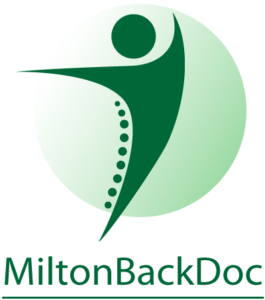Custom-made orthotics are a frequent treatment intervention employed by a variety of providers, including chiropractors, physiotherapists and chiropodists/podiatrists for a variety of conditions, including foot and ankle complaints (plantar fasciitis, pronation, ankle instability), knee problems (patellofemoral pain, genu valgus, ITB syndrome), hip and low back pain.
So, what are orthotics? A custom-made orthotic is a removable shoe insert custom made from a cast of a patient’s foot, with or without modifications. Modifications include variations in top covers, extensions, cut outs, wedges, heel lifts and posts. Their function is to assist in supporting, controlling or modifying foot position and lower limb biomechanics while weight bearing. This is usually to reduce pain or improve function. They work in much the same way that glasses work for eyes, in that they are custom-made for a particular individual, and one person’s prescription is not usually transferable to another.
Orthotics are a great relief for some, however, there are several types and they have shown varying effectiveness for different conditions and for different patients.
Prefabricated or “off-the-shelf” orthotics or insoles can generally be purchased over the counter, and are usually less expensive than the custom made variety, due to the lack of personal customization. They are also produced on a large scale by companies who produce foot and footwear related products. Prefabricated insoles can offer relief to many patients for a variety of foot conditions, including plantar fasciitis, heel pad syndrome and metatarsalgia. Since a large percentage of the population have biomechanical issues that fall into a few major categories – such as pronation (fallen arches), pes planus (flat feet) and pes cavus (high arch) – and since these present with several symptoms that are consistent across many patients, off-the-shelf insoles are geared toward patients with these common problems. Again this is similar to “reading glasses” that can be purchased off the shelf without a prescription. They will provide some assistance to a certain percentage of the population that will be enough to improve their symptoms, so they may be worth a try.
Custom-made orthotics, however, are constructed with careful consideration of the patient’s biomechanics. A thorough exam includes evaluation of the patient’s presenting symptoms combined with a biomechanical and gait exam that consists of non-weight bearing, weight bearing, and walking components. The patient’s foot is then casted, usually with plaster of paris or with a deformable foam material. The practitioner ordering the orthotic will position the foot for casting according to the needs required by the patient, and will order necessary modifications to the orthotic based on the patient’s condition. Some practitioners that fit patients for orthotics will use a force plate or 3D scanner to obtain the necessary information to create the orthotic. They may also use these forms of technology in addition to their own biomechanical examination. Once the cast is complete, it is then sent to an orthotics manufacturer and is custom fabricated to the patient’s cast and to the specifications of the practitioner.
Based on just these descriptions, custom-made orthotics immediately sound like a superior option, but the truth is that for many complaints, the results around orthotics vary widely. This can be related to many factors, including:
- Appropriateness of orthotic for the diagnosed condition – ie. orthotics for plantar fasciitis, which is a condition with significant foot involvement, versus orthotics for low back pain, which is a condition with many contributing factors
- A patient with more than one condition, where a secondary condition influences the condition for which the orthotics were prescribed – ie. plantar fasciitis with associated lower limb alterations such as osteoarthritis or impingement in the hip
- Other treatments in which the patient is participating
- Incomplete diagnosis of the patient condition – ie. plantar fasciitis related to a heel spur
- The skill of the practitioner casting and fitting the orthotic
- The skill of the orthotic lab fabricating the orthotic
- Patient compliance in wearing the orthotic
- Choice of footwear
So, what is the better choice?
This answer will vary person to person and condition to condition. My recommendations to patients considering orthotics are as follows:
- If the condition is related to muscular imbalance, deconditioning or strength deficits, the patient should work on strengthening their own musculature though exercise and activity first. They should try an orthotic if they are unable to make progress, or if symptoms persist despite building strength and co-ordination.
- If cost or time are significant factors, patients may try an “off-the-shelf” insole first. They’re accessible, and usually affordable. In many cases the patient will experience some relief, and in some cases, these are sufficient to control symptoms.
- If cost is not a factor, or if a patient has tried an “off-the-shelf”’ insole and has not experienced significant relief of symptoms, they should move to a custom made product made by a practitioner with an understanding of their condition. The practitioner should take the time to perform a thorough evaluation and account for factors such as orthotic construction, footwear, and the patient’s activities.
As orthotics are meant to be worn daily, and most of their effect is realized when weight bearing, patients will need to consider their daily activities. If your job is mostly sedentary, and you spend most of your day sitting, orthotics may be more appropriate if they are made for your non-work shoes. If this is the case, you are more likely to be walking around for recreational activities and errands, and will realize the benefit of your orthotics outside of work. If, however, your job involves standing or walking for most of the day, your orthotic will likely be more effective if it is made for your work shoes, as standing or walking at work is likely to be the majority of your weight bearing time.
Orthotics may take a while to feel “normal” in your shoes, and may cause some short term discomfort when you start wearing them. Fitting practitioners typically recommend wearing new orthotics for shorter periods of time, and increasing this by a small amount each day, building up to a full day over a period of 2-3 weeks. Once “broken in,” orthotics should be comfortable. They should not produce any rubbing or pinching and should provide symptomatic relief. In the event that your orthotics don’t provide you with symptomatic relief, a follow up visit with the casting/fitting practitioner should be made to review symptoms and function of the orthotic. From there, the practitioner can have modifications made as necessary. Your practitioner will do their best to correct any issues with your orthotics, since an orthotic that sits in a closet instead of in a shoe doesn’t provide any relief.
The life of an orthotic may be anywhere from 12 months to 2 or more years, depending on factors such as the material used to construct the orthotic, the thickness of that material, the weight of the patient, and the amount of time spent weight bearing. Most orthotics are made of a semi-rigid material that is designed to deform slightly under weight and will return to it’s original shape once the weight is removed. Like anything that is subject to repeated stress, over time, the hard shell of the orthotic will be less able to return to it’s original shape. In addition, much like a patients eyes, the patient’s biomechanics may change over time or with subsequent activity/injury. As a result, the orthotics prescription may change as well. This should be revisited with their practitioner, who should provide a new biomechanical and gait exam.
Next week we’ll review some more information on the types of practitioners you may see for orthotics fitting and casting, and some of the hiccups that come with insurance reimbursement.


